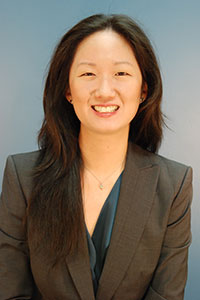
Cindy Wu, MD, assistant professor in the division of plastic and reconstructive surgery, set out to quantify the anecdotal information she was receiving from her patients. What she found in the course of her study – the results of which were published in the Aesthetic Surgery Journal – surprised her.
Wu and her fellow authors compared the preferences of patients seeking information on three common aesthetic procedures: breast augmentation, face lift, and combination breast and abdominal surgery. Since aesthetic procedures are usually elective in nature, Wu knew that patients were shopping around and weighing their options before choosing a surgeon. The study was set up to measure which factors were most influential in a patient’s ultimate decision: before-and-after photographs, patient testimonials, pricing information, and physician information, such as years in practice, educational information, credentials, etc.
“The industry understanding, for example, is that breast augmentation patients – who are generally younger – are very price conscious,” Wu said. “We also know from clinical experience that facelift patients – who tend to be older women – valued testimonials from friends, neighbors, or family members.”
The results of the study, however, upended those assumptions. Findings were consistent across patient groups and procedures, with before-and-after photos and testimonials being the most important factors for patients in all three groups when making decisions.
“Aesthetic surgery is different from other areas of surgery because it’s so visual, so experiential,” Wu said. “Photos obviously allow patients to judge for themselves whether this was a good result or not, and testimonials are also valuable because patients put a lot of stock in the experiences of previous patients. The best advertisement for you as a surgeon is definitely a satisfied patient,” Wu said.
In addition to these findings, the study is also noteworthy for its method of data collection. Wu and her colleagues used crowdsourcing to recruit study participants who used an electronic survey to weigh the attributes.
“I think that the way we traditionally have recruited patients for research studies, though email solicitation and posting fliers, is archaic and can contribute to the fact that research projects take so long to complete,” said Wu. “I was seeking options for how we could get a large number of people engaged and taking our survey, and came across Amazon’s MTurk tool.”
Amazon Mechanical Turk (MTurk) is a crowdsourcing platform that employs workers from all over the world to perform tasks online, including completing surveys. The tool has been used widely by corporations and researchers in the humanities and behavioral sciences, but had not yet gained wide acceptance in health research.
When Wu learned about the tool, she knew it would be ideal for the study, both for its ability to enroll participants quickly, but also the diversity of MTurk workers.
“While Amazon’s MTurk platform is anonymous, some research has looked at the participants and has found that many are based in the United States, with many other users in countries like India and China. In general, these are people who are educated and want to participate in studies involving research that they are interested in,” Wu said.
Before launching the survey in the MTurk community, a smaller survey was conducted in and around Chapel Hill utilizing more traditional methods of subject recruitment. The results were consistent.
Moving forward, Wu said that surgeons should utilize these findings to inform how they market themselves to potential patients. The study is especially valuable since the results contradict what had previously been believed within the field, that price was the factor many patients would value in selecting an aesthetic plastic surgeon.
“What we’ve seen is that no matter the procedure, good photos and testimonials are what people want,” Wu said. “It can be difficult to know what to focus on in marketing your practice to new patients and this study should help clear up some of that confusion and hopefully practices will have a clearer idea of where to dedicate their marketing and advertising resources.”
